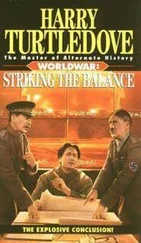“That’s what it sounds like,” was the reply.
“Keep me updated,” Mor said before slamming down the phone. He pondered the news for two beats, then called the deputy commander of Military Intelligence. He relayed the facts as he had heard them.
“Come upstairs,” the colonel said.
The opportunity that had presented itself was clear to both of them—Yasser Arafat, chairman of the PLO and commander of Fatah, a man high on Israel’s hit list for years, was in south Lebanon, a few minutes’ flight time from Israel’s northern border. Mor walked into the colonel’s office and presented the facts: ten minutes ago Arafat seemed to have entered Fatah’s forward command center in Nabatiya, south Lebanon, five miles north of Israel’s border. There was no positive ID of the man. The only way they could be sure was to have a look at the parking lot of the house that served as their HQ—if it was lined with Mercedes-Benz cars and top-of-the-line Jeeps, they would know. A visit from Arafat would draw all of the area’s commanders. He did not visit the trenches that often; no one would miss the occasion.
Five minutes later, Mor and the colonel presented themselves outside the office of Chief of Staff David Elazar. They were escorted straight through. Elazar smiled when they entered. He knew both of them well. After a sixty-second presentation of the facts, the three of them left the office and walked through the door that led to the civilian half of the building, to the office of the defense minister. Although only thirty yards divided the two offices, the separation was kept stark and clear. Moshe Dayan listened to the news. “I’ll pass this on to Golda. Get ready. And get me some verification.” Before they turned from the room Dayan already had Golda on the phone. The conversation was over in seconds. He looked back at the uniformed men. “She authorized it. But she also demands verification that it’s him.”
The Chief of Staff sent Mor to “The Pit”—the air force control room dug several stories under the soft, sandy earth of the IDF headquarters. From there, Mor could supervise the mission. Moments later, an order was sent to the northern Ramat David airbase to arm a foursome of F-4 Phantoms with quarter-ton bombs. From the runway to Nabatiya was seven minutes flight time. A single-engine surveillance aircraft was already in the air, heading north. The pilot of the slow-flying Cessna had received orders from the office of the chief of staff before they went to Dayan’s office. Each minute counted. The squadron’s best aerial reconnaissance man sat behind the pilot, studying Nabatiya as it appeared on long strips of aerial photos. His mission was to locate the parking lot and answer one simple question—empty or full? He did not know that Arafat was suspected of being present.
Mor looked at his watch agitatedly. His feet were bouncing, his back sweating. “I’m overseeing one of the most important missions in the history of the country—the mission to eliminate Yasser Arafat,” he thought to himself. Then he looked at the air force officer handling the mission from his end. He was all business, switching phones and radio receivers, issuing short and clear orders. It seemed to Mor that this officer and the other air force officers were too pressed for time to feel history in the making. After ten minutes of nerve-racking tension, the aerial reconnaissance man radioed, announcing calmly that he was over the borderline, five miles from the parking lot. “I have 8/8ths across the board,” he said. Everyone in the pit realized the implications. In meteorological terms 8/8ths describes the fraction of the sky covered by opaque clouds: visibility was nil.
Leaning back in his chair, Mor let out a deep, remorseful sigh. The room around him was filled with the sound of the air force officers folding up the special mission. What a shame, he thought to himself. Yasser Arafat, leader of the PLO, owed his life to 8/8ths cloud cover.
Assassination missions had fallen low on the Mossad and Military Intelligence list of priorities. The were two reasons for this. The first was the failure in Lillehammer. The debacle that resulted in the death of an innocent man and sent six Mossad operatives to jail led to the immediate cessation of assassination missions. The Mossad’s image had been tarnished at home and abroad. It was one of the Mossad’s toughest hours. Their confidence was shaken, their prestige tarnished.
Senior officers from within their ranks immediately began an in-house investigation. Caesarea and the Facha division, which supplied the initial faulty intelligence that led to the debacle, were called on to assist. The internal investigative committee prodded, poked, and probed. The report they handed in to Zvi Zamir detailed all aspects of the disastrous mission and the operational lessons to be learned from it.
But before the agency could learn any lessons a second blow was dealt: war. On October 6, 1973, Yom Kippur, the Jewish Day of Atonement, the Syrian and Egyptian armies coordinated a surprise invasion of Israeli-controlled territory on the Golan Heights and the Sinai Peninsula. The attack came under the guise of innocent border maneuvers. Israeli intelligence agencies had failed dismally in not seeing through the Egyptian-Syrian ruse.
There was a cessation of terror during the war, the Palestinian organizations waiting on the sidelines for the elimination of Israel. Military Intelligence’s Branch 4 was shut, its officers dispersed to different units until the end of the war, which would claim over 2,500 Israeli lives.
The inability to predict the war was a colossal intelligence failure, a nine on the Richter scale. The Parliamentary Commission of Inquiry under the jurisdiction of Supreme Court Justice Shimon Agranat, which was set into motion to investigate the failure, kept the senior officers busy, as they exchanged accusations of culpability. Few senior officers escaped the fray. The committee’s findings were grave. Major General Eli Zeira, commander of Military Intelligence, and Lieutenant General David Elazar, the IDF’s Chief of Staff, were both forced to step down.
One of the few officers not involved in the squabble was Lieutenant Colonel Mor, who afterward did everything in his power to push for Mossad and IDF missions outside the country—like the one that fell into his lap when Arafat visited Nabatiya.
In September 1974 the top spot at the Mossad changed hands. Zvi Zamir, fifty-two, stepped down. Yitzhak Rabin, the new Prime Minister and former IDF Chief of Staff, a man untainted by the 1973 war, appointed his close friend Major General (ret.) Yitzhak Hofi. Hofi had shed his uniform two months earlier, after skillfully leading the Northern Command during the conflict. A cool-headed and conservative army man, he knew little of the Mossad’s ways. He took to learning all he could, while addressing the recommendations of the Agranat Commission, including, among other things, starting an independent intelligence analysis wing. In 1976 the Facha division was formed as an independent unit, separate from Tzomet, housing all branches of operational intelligence analysis under one roof. Caesarea, under the guiding hand of Mike Harari, was reorganized. New departments and new branches in the chain of command were put into place. Kidon, a small, secretive assassination unit, was created. Caesarea was renamed several times, but the old name never wore off—it endures today as a nickname.
Hofi served as head of the Mossad for eight years, from 1974 to 1982. As opposed to his predecessor, he felt no obligation to avenge the Munich Massacre. As far as he was concerned the terrible shock of war, to both the defense establishment and the civilian population, did not allow for the type of single-minded focus necessary to hunt down the perpetrators of Munich to the end. Munich-based retribution was downgraded among the Mossad’s priorities.
Читать дальше












